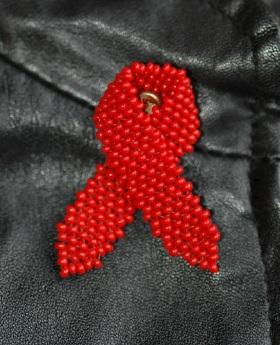Using AI to control energy for indoor agriculture
30 September 2024
Published online 1 December 2012

In 2011, the Joint United Nations Program on HIV/AIDS (UNAIDS) set a goal to stop the spread of the HIV/AIDS pandemic by 2015. With nearly a 1,000 days to go, the UNAIDS World AIDS Day 2012 report remains optimistic, citing a 50% drop in the number of new HIV infections registered in 25 countries, and most of them in Africa.
However, this is not the case in the Middle East and North Africa (MENA) where the number of new infections continues to rise in the region home to 300,000 people living with HIV/AIDS. There were 35% more new cases in 2011 compared to a decade ago. The number of HIV-related deaths rose from 20,000 in 2005 to 23,000 in 2011. MENA is the only region in the world that has yet to record a reduction in the number of children infected with HIV.
Many national governments have passed laws discriminating against people living with HIV/AIDS. Oman, Sudan, Yemen and the United Arab Emirates have banned people living with HIV/AIDS from entering their territories. Egypt and Qatar require foreign residents applying to work or study for longer than 30 days to provide medical records stating they are uninfected with HIV. In the six Gulf Cooperation Council countries, migrant workers must undergo HIV tests and those diagnosed with infection are often quarantined and deported, according to the report, released to coincide with World AIDS Day on 1 December.
"The MENA region lagged behind in reaching out to populations at risk, leading to a relatively low percentage of persons needing antiretroviral therapy actually getting them," says Jacques Mokhbat, chair of the department of internal medicine at the Lebanese American University School of Medicine in Beirut. "However, there has been a significant increase over the past three to four years."
According to UNAIDS, the number of people accessing HIV treatment in MENA nearly doubled between 2009 and 2011, rising from 8,700 patients to 17,000 patients. Only 15% of people needing treatment are receiving it, however. Less than a tenth of HIV-infected pregnant women living in the region received medication to prevent mother-to-child transmission of the virus.
"In GCC countries, antiretroviral protocols were introduced in the early 2000's and various first, second and third lines drug regimens were quickly made available. Other lower income countries in the region, such as Lebanon, are still sticking to one or two older treatment protocols and miss out on alternative regimens," adds Mokhbat. "Many studies conducted in Lebanon are showing transmitted resistance, meaning that the basic protocols might fail and raising the threat of further transmission of resistant viruses."
Mokhbat contends that addressing stigma and discrimination against people living with HIV/AIDS is the best approach to increase their access to healthcare. Early diagnosis and case management can help reduce the risk of a person passing the virus, and curb the spread in the region. "We need laws that protect the rights of individuals regardless of their sexual preferences, provide support and management for drug users, as well as awareness campaigns on sexually transmitted infections."
doi:10.1038/nmiddleeast.2012.169
Stay connected: